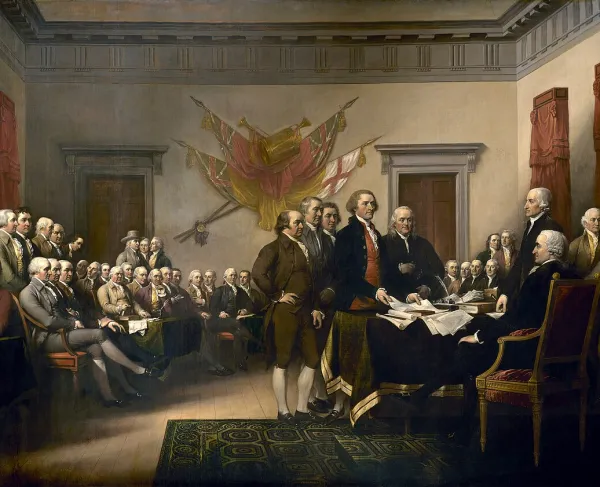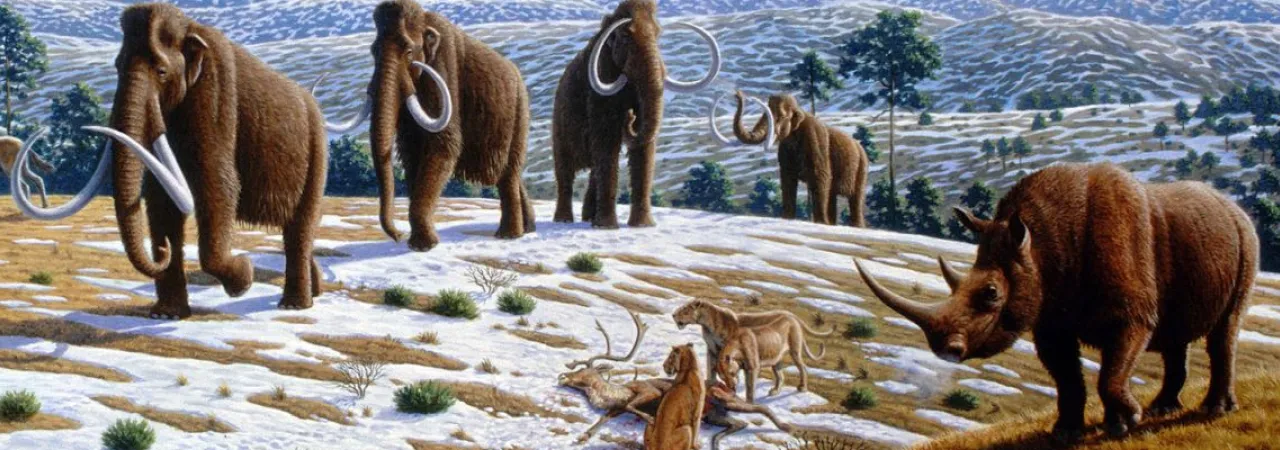
Tens of thousands of years before the American Revolution, an animal died in what is now Greenbrier County, West Virginia. Rather than being left out in the open to be picked apart by scavengers, however, the creature’s corpse quickly became buried by sediment that time later compacted into rock. The soft tissue, such as skin, fur and organs also deteriorated until only the skeleton remained, and even then the cells making up the bones dissolved as they were replaced by a kind of rock mold, or fossil, that remained as a memorial to the animal that survived until the modern era. Or, at least, a memorial to its claws, because that is what a group of men in 1796 discovered in a Virginia cave before breaking them free from the surrounding rock and transporting them to the one man in the state who might know where they came from: Vice President-elect Thomas Jefferson.
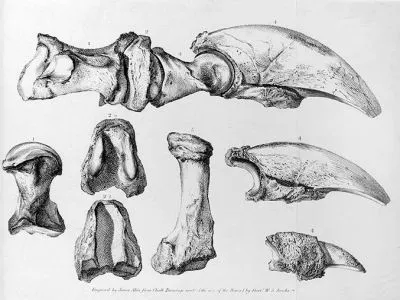
Contrary to the men’s hopes, Jefferson, a passionate amateur naturalist who made himself intensely familiar with the surrounding wildlife native to his beloved Virginia, initially had no idea what animal the bones belonged to. Certainly not to any creature Jefferson was familiar with. They were enormous, for one thing: the claws alone were eight inches in length, so whoever’s they were must have been larger than any animal yet seen in North America. Jefferson was utterly perplexed, but the discovery excited him nonetheless, for more reasons than one.
During his years in France a decade prior, Jefferson had an intense argument with fellow amateur scientist George-Louis Leclerc, Comte de Buffon over his “Theory of Degeneracy.” According to the theory, the climate of the New World affected the growth rate of the fauna living there, leaving them diminutive and feeble compared to their Old World counterparts. Buffon, who had never set foot outside France in his life, also believed that the effects of that climate impacted not just animals but people as well, which enraged Jefferson. He had already proven the French aristocrat wrong by transporting the stuffed body of a bull moose to France as a demonstration, but as Jefferson examined the fossils before him, he sensed an opportunity to strike a fatal blow to Degeneration Theory once and for all.
As he began to decipher what kind of animal remains lay before him, he first recognized the immense age of the specimen, judging it to be at least a ten thousand years old. He was sure of this because, like many polymaths of his era, Jefferson kept a close eye on all sorts of important scientific advances, and one of the largest of these was the rapidly emerging field of paleontology. Humans had interacted with fossils in some respect for thousands of years, though they did not always know what exactly they were looking at. Many anthropologists today believe that the remains of extinct animals like dinosaurs may have inspired the stories of dragons or the many monsters of Greek Mythology, but a few tried to wrestle with the mysterious remains in a more rational manner. Greek philosopher Xenophanes and Medieval Chinese intellectual Shen Kuo both used fossils to formulate ideas about how the earth changes through the eons, but it was only until the era of the Enlightenment, where intellectuals sought rational explanations for all natural phenomena, that they truly began to understand them.
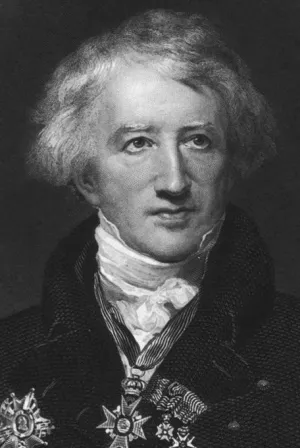
One of the most important voices of this development was Georges Cuvier, another French naturalist and contemporary of both Buffon and Jefferson. Cuvier first made his mark in 1808 when he helped identify the skeleton of an enormous creature found in a limestone quarry a few decades before in the Netherlands. The animal was probably aquatic, having four stubby limbs that served as flippers, but those who saw it found it unlike any creature they had seen before. Most thought it to be a large fish or predatory whale, but upon examining the shape and structure of the skull, Cuvier concluded that it was in fact a giant lizard, very similar to the group called monitor lizards that are currently among the largest living today. Recent genetic testing confirmed Cuvier’s belief that the animal now called Mosasaurus was indeed a large, aquatic monitor lizard that prowled the seas of the Cretaceous Period and vanished with the dinosaurs 66 million years ago, but more importantly, the fossil helped Curvier shape his theory that in times of geological catastrophe, certain animal species are wiped out completely and leave others to take their place in the ecosystem. The reason why these animals had never been seen alive before, he argued, is that they no longer exist. It was a great intellectual achievement for science on its own but later proved especially important in how it influenced Charles Darwin’s groundbreaking 1863 work On the Origin of Species. Still, even in Jefferson’s day, the newly created field of paleontology was brimming with excitement, and Jefferson was all too eager to take part.
The next problem Jefferson faced was deciphering what the whole animal would have looked like when it was alive, and having only access to the claws and fingerbones, this required a good bit of deductive reasoning. Why would an animal need claws of that size to begin with, he asked himself, and the only answer he could imagine was to capture prey and tear through flesh. The only animal in the area with claws that even approached that size was a bear, but judging by its shape Jefferson believed they looked far more like a lion’s claw, though still two or three times larger. “What are we to think of a creature whose claws were 8. Inches long, when those of the lion are not 1 ½ I.?” He wrote to his friend, Dr. Benjamin Rush. Discussing that matter with his acquaintances, most seemed to agree with his hypothesis, giving him the confidence to inform the American Philosophical Society of his discovery and to make the journey to Philadelphia to present a lecture on March 10th, 1797, his duties as Vice President characteristically forgotten. Presenting his specimen primarily as “a Quadruped of the Clawed Kind,” Jefferson presented the evidence of his lion hypothesis to the Society, ultimately calling his creature Megalonyx, Greek for “Great Claw.” What was more, as Jefferson made very clear, was that Megalonyx was also still out there waiting to be found. Cuvier had not yet published his conclusive proof of extinction yet, and Jefferson, never one to meekly accept the opinions of others, had very different ideas on the natural laws of ecology. His view of the world held that nature lay in a constant, unchanging state of balance, and the removal of one species from the ecosystem would cause the entire environment to collapse. As he wrote in his essay, “In fine, the bones exist: therefore the animal has existed. The movements of nature are in a never ending circle. The animal species which has once been put into a train of motion, is still probably moving in that train.”
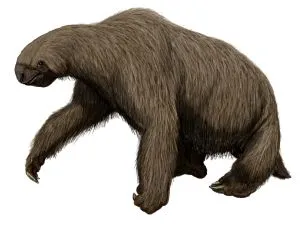
As he spent time in Philadelphia, however, he began to suspect that the true nature of Megalonyx was far stranger than he ever could have imagined. The animal Jefferson suspected of being an enormous lion was, in fact, an enormous sloth. Standing about nine feet tall and weighing up to two thousand pounds, about the size of a large ox, Megalonyx was a lumbering yet peaceful herbivore, using its enormous claws not for tearing through meat, but to grasp tree branches to more easily feed on leaves and nuts, much like its tree-dwelling relatives do today. This finding was later confirmed to Jefferson by fellow Society member Dr. Casper Wistar, in 1799. If Jefferson despaired at all at these findings, he made little sign of it, however, and he continued to show great interest in paleontology. In the aftermath of the Louisiana Purchase, for example, he even tasked explorers Meriwether Lewis and William Clark to find “the remains and accounts of any [animal] which may be deemed rare or extinct,” including both Megalonyx and the Wooly Mammoth. Their failure to fulfil this task probably led to Jefferson finally revising his views on extinction later in life, but his discovery of the creature that received the scientific name Megalonyx Jeffersonii in 1822 ultimately made a positive impact on paleontology in North America.
Lewis and Clark did discover plenty of fossils on their expedition, and the samples they sent back to Jefferson provided a wealth of knowledge about life in Pleistocene North America (~2.5 million to 11,000 years ago), which even today scientists are still expanding upon. Even Jefferson’s instincts at the possibility of a North American lion proved more right than wrong, as in 1853, American paleontologist Joseph Leidy discovered the bones of a large cat now called Panthera Atrox that was approximately the size of the African species and roamed North American at exactly the same time as Mammoths, Sabre-toothed cats, and even Thomas Jefferson’s own Megalonyx.
